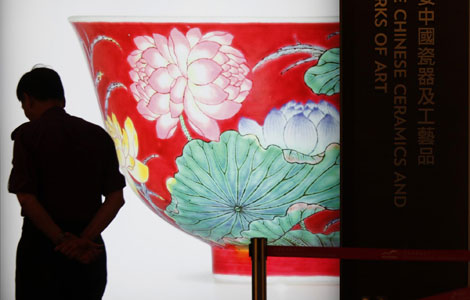Back to basics
Updated: 2007-12-07 06:52
By Chen Nan (China Daily)
|
||||||||
Slowly at first, the doctor's hands explored the backbone, as if it circled an invisible line on the patient's neck and back. Gradually, he began a slight push and press with his fingers, shaping out the curve of the spine as the patient lies, eyes closed on the bed.
After five minutes, the joints of the patient's back and neck make a sound. Tui-Na literally means "push" and "grasp" and its invigorating and re-energising style focuses deep pressure and movement along the body's energy and acupuncture meridians.
Dr Diao Wenchang, 73, is a master of Spine Tui-Na, who works at the Diaoshi Health Garden located on 2nd floor, No 16, Jianwai Soho. His specialty is a powerful therapeutic extension of traditional Chinese medicine. Tui-Na makes use of many different strokes that are applied to acupuncture points, channels and muscle groups.
"The sounds that are made through Tui-Na mean the pain of certain bone joints and nerves get relieved," Diao explained.
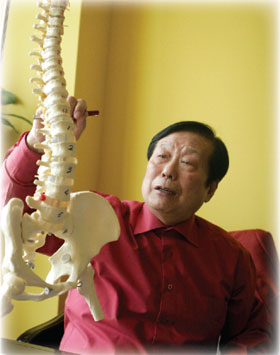
"By correcting abnormal anatomic location or relation, activating qi and blood flow, and removing stasis along the meridians, Tui-Na relieves the pain or ache and recovers the functionality of muscle, tendon, bone and joint." Of all the parts of human body, the spine is the most important, "because it joins and supports the whole body and seldom gets rest," the doctor said.
"Different points along the backbone reach certain nerves of the whole body like the heart, lung, and so on. So it is an effective way to treat illness by spine Tui-Na," he said.
Having received demanding training as a traditional Chinese medicine doctor and Tui-Na therapist focusing in spine healthcare since he was young, Diao now enjoys professional respect both at home and abroad.
He has a clinical and research practice at the Chinese Traditional Medicine Association, one of the country's most prestigious traditional medical facilities. Daio said he focuses exclusively on treating patients through Spine Tui-Na while conducting research in an effort to understand its apparent success.
"Our backbones are the main structure of human body. To protect it means reducing the possibility of get sick thus stay healthy without taking much medicine. It can even function as anti-aging method," he said.
Diao said the use of Spine Tui-Na relies on classical notions of Chinese health -- that the body is suffused with two sorts of channels, called "jing" and "luo," along which the vital force, or qi, which flows and also along which acupuncture points are located.
"The ancient way of qigong is to move the qi through these channels," Diao said. "The doctor's finger press moves through his own channels and is transmitted to the patient. The patient reacts."
Diao is energetic and alert, despite his advancing years. His Spine Tui-Na has been effective in treating a range of illnesses, such as high blood pressure, a number of heart ailments, and certain gastrointestinal, respiratory and neurological problems.
Through Chinese history, the technique and practice of Tui-Na has usually been transmitted from father to son, which was howDiao learned.
"In China, these sorts of skills were always taught secretly, always the son was taught, not the daughter," Diao said. However, he wants to let more people know about this Chinese traditional medical treatment skill. "It is a time of updating and information spreading. As an old Chinese traditional medicine doctor, I want to contribute to disclose the skill of Spine Tui-Na to the world."
"There are an increasing number of young and middle-aged scholars as well as medical students who pay attention to it," he said. "This is one of the valuable things in China. It should not disappear."
(China Daily 12/05/2007 page18)

 'Taken 2' grabs movie box office crown
'Taken 2' grabs movie box office crown
 Rihanna's 'Diamonds' tops UK pop chart
Rihanna's 'Diamonds' tops UK pop chart
 Fans get look at vintage Rolling Stones
Fans get look at vintage Rolling Stones
 Celebrities attend Power of Women event
Celebrities attend Power of Women event
 Ang Lee breaks 'every rule' to make unlikely new Life of Pi film
Ang Lee breaks 'every rule' to make unlikely new Life of Pi film
 Rihanna almost thrown out of nightclub
Rihanna almost thrown out of nightclub
 'Dark Knight' wins weekend box office
'Dark Knight' wins weekend box office
 'Total Recall' stars gather in Beverly Hills
'Total Recall' stars gather in Beverly Hills
Most Viewed
Editor's Picks

|

|
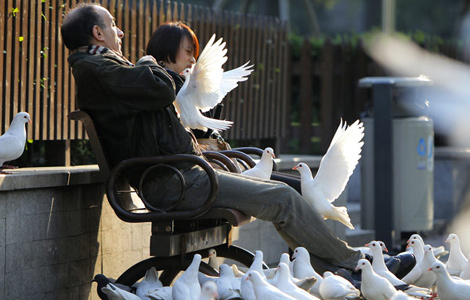
|

|
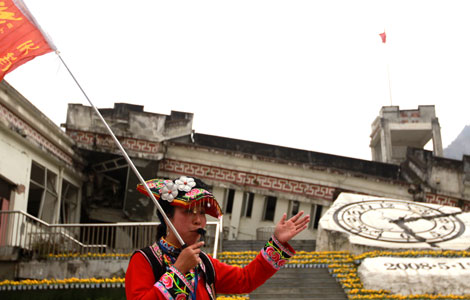
|
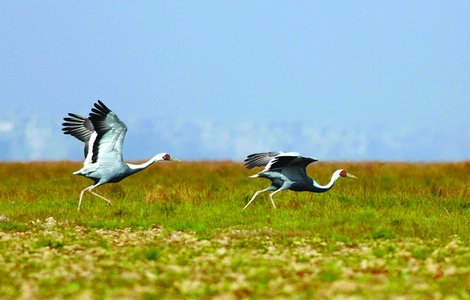
|
Today's Top News
Columbia opens Confucius Institute
China OKs US-made bird flu drug
Former railway minister charged for bribery
US not to intercept DPRK missile unless threatened
China's Qiaodan sportswear sues Michael Jordan
Rail to connect Beijing's new airport
Bill Gates: innovation improves philanthropy
Car parts found to contain toxic contents
US Weekly

|

|



